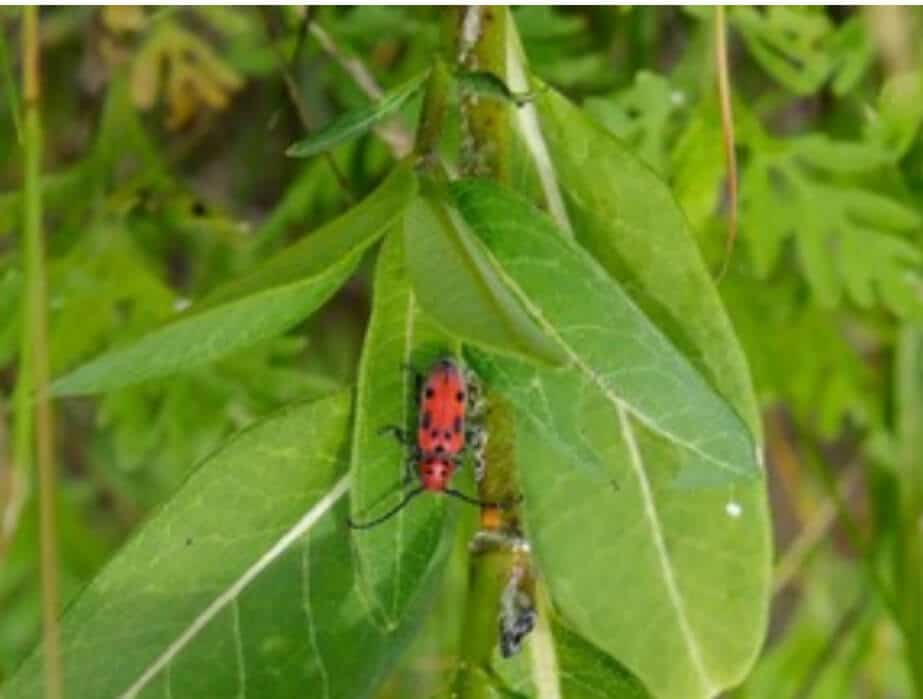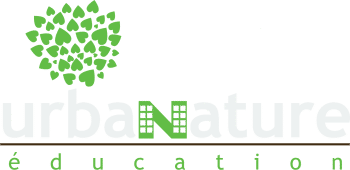The Falaise St-Jacques in N.D.G. and Champs des Possibles in Mile End are community-action success stories, and more are needed in Montreal.
Author of the article:
Lindsay Doyle and Ashley Spanier-Levasseur • Special to Montreal Gazette
Published Sep 13, 2023

A red beetle sits on a milkweed plant in Montreal’s Technoparc — an area that continues to face threats of development and industrial expansion, note Lindsay Doyle and Ashley Spanier-Levasseur.
It should be, by now, needless to say: Climate change presents immediate challenges to the lives of Montrealers.
In April, an ice storm left nearly half a million residents affected by widespread power outages. This summer, smoke from forest fires in northern Quebec had Montreal reporting
the worst air quality in the world. Torrential downpours have flooded homes and closed highways. Heat waves continue to break provincial and global records.
All the while, research is emerging on how climate change negatively affects the mental health of Canadians. Following the COP15 biodiversity meeting in December 2022, the Montreal Metropolitan Community made international commitments to conserve 30 per cent of its land by 2030. However, only 23.6 per cent of Greater Montreal remains in a natural state.
Informal urban green spaces are key in reaching the 30-per-cent goal and helping mitigate the effects of climate change. Informal urban green spaces are defined as urban areas historically of human use, now uninhabited and covered with spontaneous vegetation. These areas provide valuable benefits, such as flood mitigation and temperature regulation, formally known as ecosystem services.
This summer, we joined a team of researchers from Concordia and McGill universities to create Finding Urban Nature (FUN): a collaborative, transdisciplinary research and community outreach project to better understand the value of informal green spaces.
Our work supports the wealth of research on the ecosystem services that informal green spaces provide. Studies suggest daytime air temperatures are up to 40 per cent less with increased tree canopy cover, countering the urban heat island effect marked by climbing temperatures in areas with exposed impervious surfaces like paved roads, parking lots and roofs.
Additionally, informal green spaces host a wealth of biodiversity. Trees work by filtering pollutants in the air and significantly mitigating flooding during intense rain events.
Furthermore, informal green spaces have high cultural and social value. Working alongside community organizations, our team examined four informal green spaces in Montreal: Falaise St-Jacques (UrbaNature Education, Sauvons la Falaise), Champs des Possibles (Amis du Champs des Possibles), Parc-Nature Mercier-Hochelaga-Maisonneuve (Mobilisation 6600), and the Technoparc (Technoparc Oiseaux).
The Falaise St-Jacques and the Champs des Possibles are success stories on how community action can lead to the protection of informal urban green spaces, safeguarding the benefits they provide. Following years of advocacy from locals, the Falaise St-Jacques, historically used as a dumping ground in N.D.G., is set to become one of Montreal’s new grand parcs, a network of major parks in the city.
The falaise hosts a wealth of biodiversity, including over 80 bird species, and serves as an important habitat for migratory birds. The Champs des Possibles, an abandoned rail yard in Mile End, is now a protected area co-managed by a community organization and the city. The de facto park is a prime example of the social value of informal green spaces.

